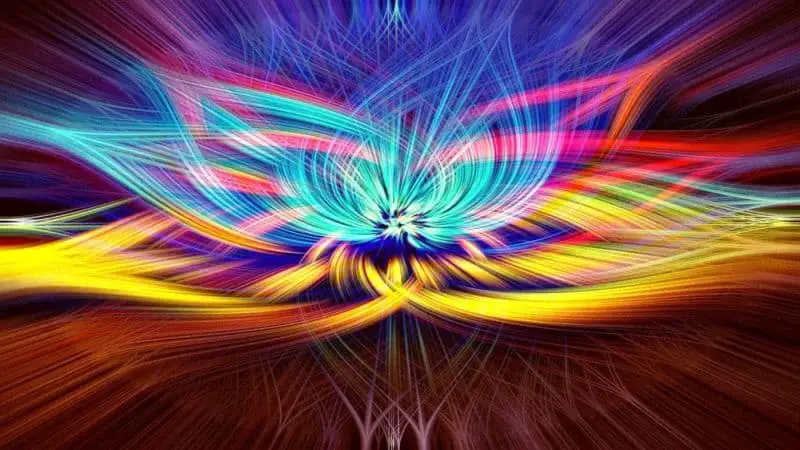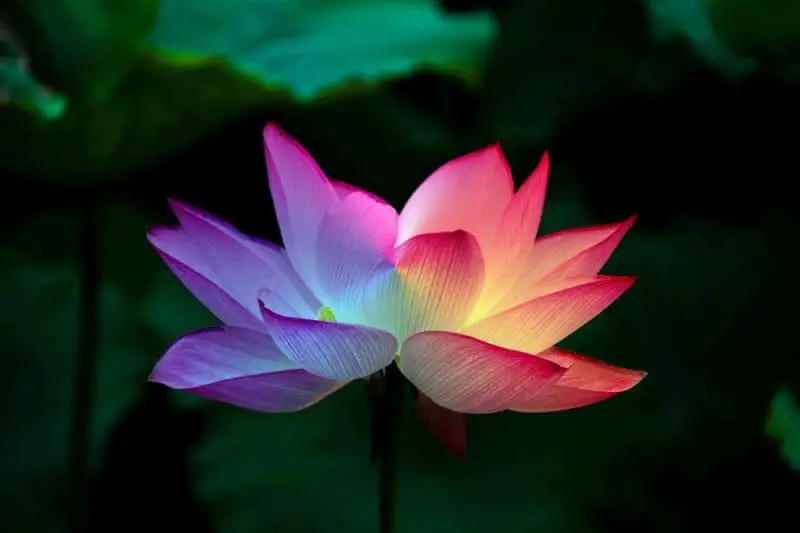Last Updated on July 23, 2023
Life energy forces in our bodies play a significant role in our overall well-being. The body has spiritual energy centers, called chakras, that influence one’s physical, mental, emotional, and spiritual states. They are the focal points of energy reception and transmission.
The studies about these energy points originated in the ancient Sanskrit literary records known as Hindus Vedas. Aligned chakras allow the prana energy to flow in the body, as contained in the scriptures of Hinduism and belief in the prana energy. The chakra ideology also emerged across esoteric beliefs or inner traditions of Hinduism, Tantric Buddhism, and Tibetan Buddhism.
Prana means “life force” or “vital principle.” It is a subtle energy in the body that manifests itself through the breath. Opposite to the physical form, this vital life force is like the aura or energy that radiates from within.
Derived from a Sanskrit word “Cakra,” which means wheel or disk, chakras are wheel-shaped vortexes of energy. The wheel or disk signifies the way energy rotates within the body. Also described as flowers with petals, chakras correspond to specific sense organs, colors, shapes, and mantras.
There are seven major energy points or chakras along our spine, starting from the tailbone to the head. Misaligned and overactive chakras point to the weakest part of our body and aspects of our lives that need our attention. This is why we need to maintain balance to keep the energy flow within us.
In this article, you will learn more about:
- The seven major chakras that significantly influence almost all aspects of one’s life
- The location and function of each chakra in the body and the parts and organs each cover
- The physical and non-physical signs of unbalanced and blocked chakras
First: The Root Chakra
The root chakra, or “Muladhara” in Sanskrit, is at the base of our spine, pelvic floor, legs, bones, and the first three vertebrae. The root words of the term “Muladhara” are “mula” (root) and “adhara” (support).
This chakra governs the foundation of our body and gives us a sense of security and basic survival. Balanced root chakra allows you to be more creative, passionate, and financially independent. It helps us develop self-esteem, a sense of belonging, and personal integrity.
An overreactive and unbalanced root chakra causes fear of loss of group identity and a feeling that you don’t belong. Some physical symptoms include health problems related to the lower back, leg, feet, colon, and bladder.
Second: The Sacral Chakra
Above the pubic bone and just below the navel is the chakra known as “Svadhisthana.” It’s a Sanskrit term derived from the words “swa” (self) and “adhishthana” (established).
The sacral chakra is responsible for creative and sexual energies that give us feelings of pleasure, wellness, and abundance. Balanced chakras make a person friendlier, more passionate, and successfully fulfilled.
A blocked sacral chakra may cause one to feel uninspired, emotionally unstable, and afraid of change. Physical manifestations of unbalanced chakra include depression and sexual dysfunction.
Third Chakra: Solar Plexus Chakra
The solar plexus chakra covers all metabolic and digestive-related organs. Known as “Manipura” in Sanskrit, this energy point is the source of individual power, commitment, and self-esteem. Manipura came from the words “mani” (jewel) and “pura (city).
This chakra defines our personality and values and the need for self-understanding and development. It gives you a sense of clarity, self-confidence, wisdom, and the ability to make excellent decisions.
You may have anger issues, experience low self-esteem, and seem to be indecisive about anything when you have blockages in this chakra. Unbalanced solar plexus chakra manifests itself to physical symptoms like stomach aches and other digestive health issues.
Fourth: Heart Chakra
The fourth primary chakra encapsulates the heart, lungs, breasts, and thymus gland. This is where the physical and spiritual meet. The heart chakra is all about love, compassion, forgiveness, and spiritual awareness.
We know this chakra as “Anahata” in Sanskrit, which means “unhurt, unstruck, and unbeaten.” It regulates your emotional development and makes you more loving and helps you build healthy relationships with others.
Blockages on this energy point can cause a person to hold a grudge against someone. Fear of betrayal, jealousy, anger, and grief are some psychological signs of unbalanced chakra.
Fifth Chakra: Throat Chakra
The fifth major chakra is Vishuddha in Sanskrit, which means “to purify.” It covers your throat, thyroid, mouth, teeth, gums, upper back, and neck. This chakra opens yourself up to listening and speaking the truth.
You’ll have trouble speaking the truth if something is blocking this chakra because it covers all the communication aspects. You find it difficult to pay attention and have a fear of judgment. Clear signs of unbalanced and overactive chakra are thyroid problems, sore throat, tension headache, and stiffness of neck or shoulder.
Sixth Chakra: Third-Eye Chakra
The Sanskrit word “Ajna” means beyond wisdom, and it pertains to the sixth chakra’s ability to connect to the external world. It governs intuition and helps you see beyond illusion and spectacle. You can find this chakra between the eyebrows, eyes, ears, head, pituitary gland, and lower part of the brain.
The third-eye chakra is the chakra of wisdom, which always aims to look for the truth. The principle of imagination, creativity, and openness drive it and makes you receptive to energy movements.
When there’s a misalignment of chakras, it may cause trouble accessing your intuition and difficulty learning a new skill. You may become judgmental, depressed, anxious, dismissive, and introverted. Dizziness, headaches, and other brain health issues are the bodily symptoms of Ajna chakra blockage.
Seventh Chakra: Crown Chakra
The crown chakra is “Sahasrara” in Sanskrit, which means thousand or infinite. It’s the seventh primary chakra that people also refer to as “thousand-petalled lotus.”
Lotus flowers represent chakras, with lower chakras bearing fewer petals and higher chakras having more. The more petals a flower or chakra has, the more energy and higher frequency it accumulates. Therefore, people refer to the seventh chakra as “thousand-petalled lotus” because it is on top of the chakra ladder.
This chakra is on top of the head, the nervous system, and muscular system. It rules a person’s pursuit of spiritual peace and connection to the higher state of consciousness. It presents opportunities to have pure awareness and live in the present moment.
A feeling of isolation and emotional distress are the downsides of having an imbalanced crown chakra. This can manifest physically in the form of headaches, fatigue, and mental illness.
Conclusion
Having a better understanding of the abovementioned energy centers allows us to analyze our life’s goals and fears. It helps us identify our weak points and powerful aspects of ourselves. Knowing the chakra’s influence in our physical, emotional, psychological, and spiritual well-being only proves that everything is interconnected.
The chakras have their distinct characteristics that affect each other. When one chakra has a blockage, it affects the rest of the primary chakras. Thus, maintaining a balance in all seven chakras is integral.
Restoring a congenial flow of energy within your body through these energy centers is essential. Hence, it’s important to know how to open and balance your chakras. You can do some chakra healing practices, meditation, yoga with chakra-balancing chants, and many others.
All the major chakras have to work as a system to maintain equilibrium and harmony between the body, mind, and spirit. This will translate to a good physical standing and spiritual health.

